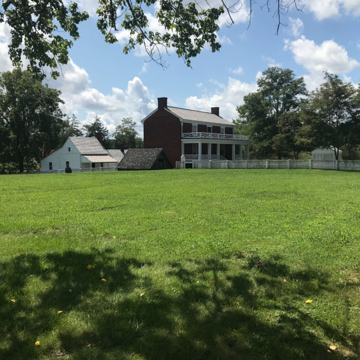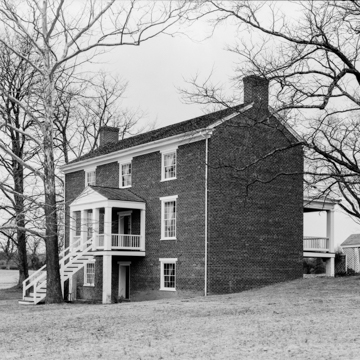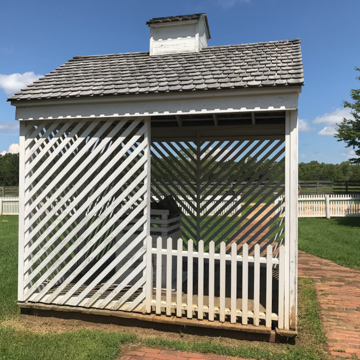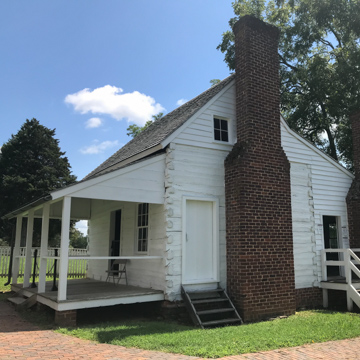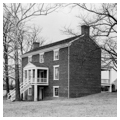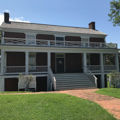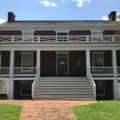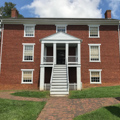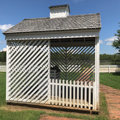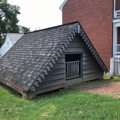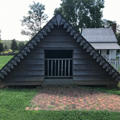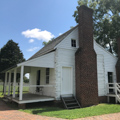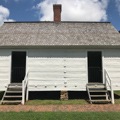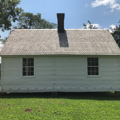Originally built as a tavern, the house was purchased in 1863 by Wilbur McLean, who, after the First Battle of Bull Run was fought on his farm in northern Virginia, wanted to remove his family from the dangers of war. In 1892 the McLean House was dismantled for transport to the World's Columbian Exposition of 1893 in Chicago with plans to reconstruct it later in Washington, D.C., as a Civil War museum. When this venture failed, the brick and timbers from the house were left on the site for almost a half century. During the National Park Service's reconstruction of the house, as much of the original material as possible was used.
The two-story, Greek Revival brick building is set on a raised basement. Its one-story porch with Doric pillars has a balustrade featuring diamond-patterned railing. Although the house is a reconstruction, the floor plan and room use are historically correct, based on primary documentation. The placement of the dining room in the basement shows how well-to-do antebellum Virginians entertained in their parlors, rather than in dining rooms as did their eighteenth-century counterparts. The parlor was reconstructed based on its appearance in the painting The Surrender of General Lee to General Grant, April 9, 1865 (1867) by Louis Guillaume and with original furnishings surviving in other museums. The rest of the house is furnished with local pieces acquired from neighboring families by the late Lucille McWane Watson, a Lynchburg antiquarian and historian. Adjacent to the house are reconstructions of the lattice well house, the frame icehouse above an ice pit lined with logs and floored with sand, the log kitchen, the double-crib V-notched log slave quarters, and the vertical-board one-hole privy. Although not original structures, these nevertheless give an idea of the arrangement of outbuildings.

